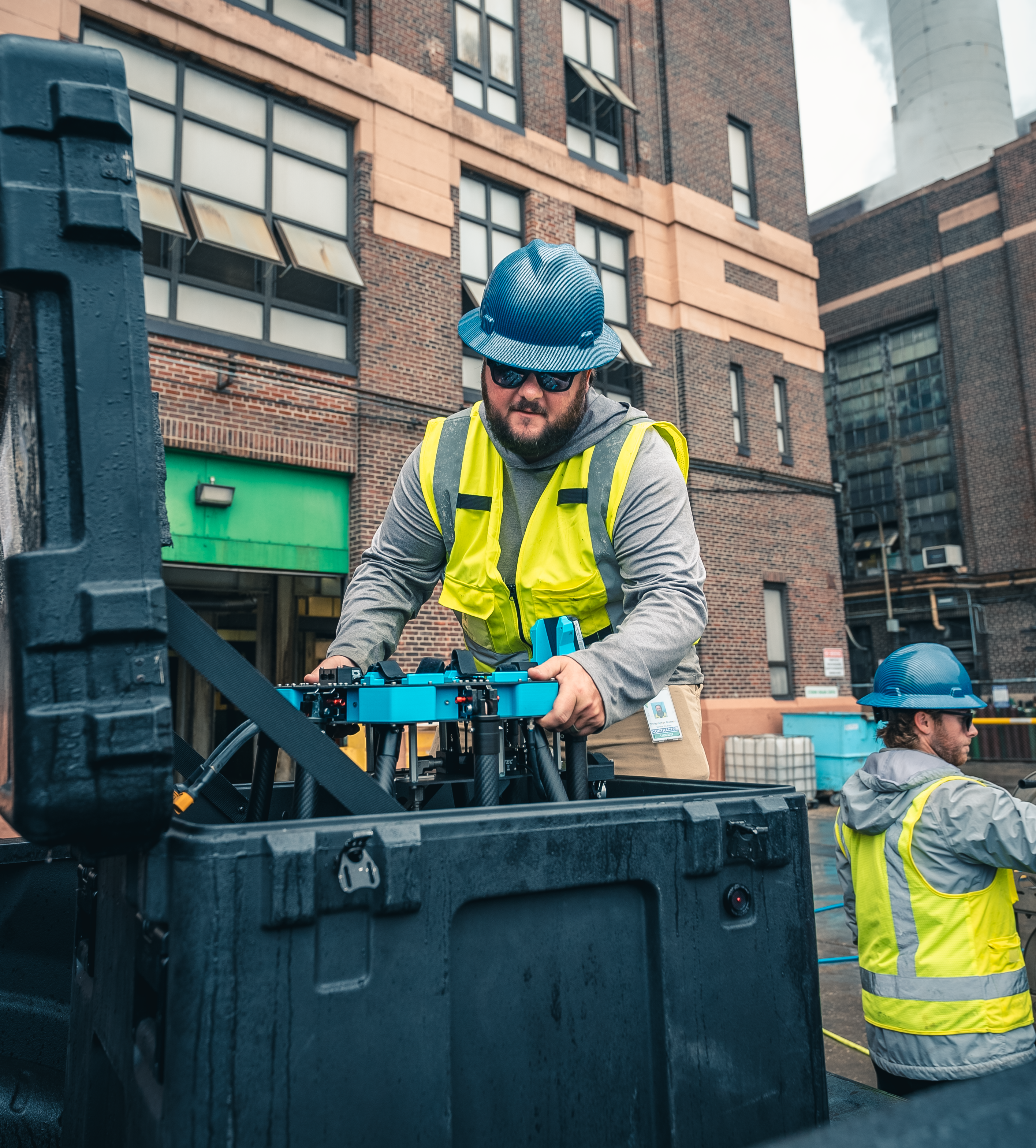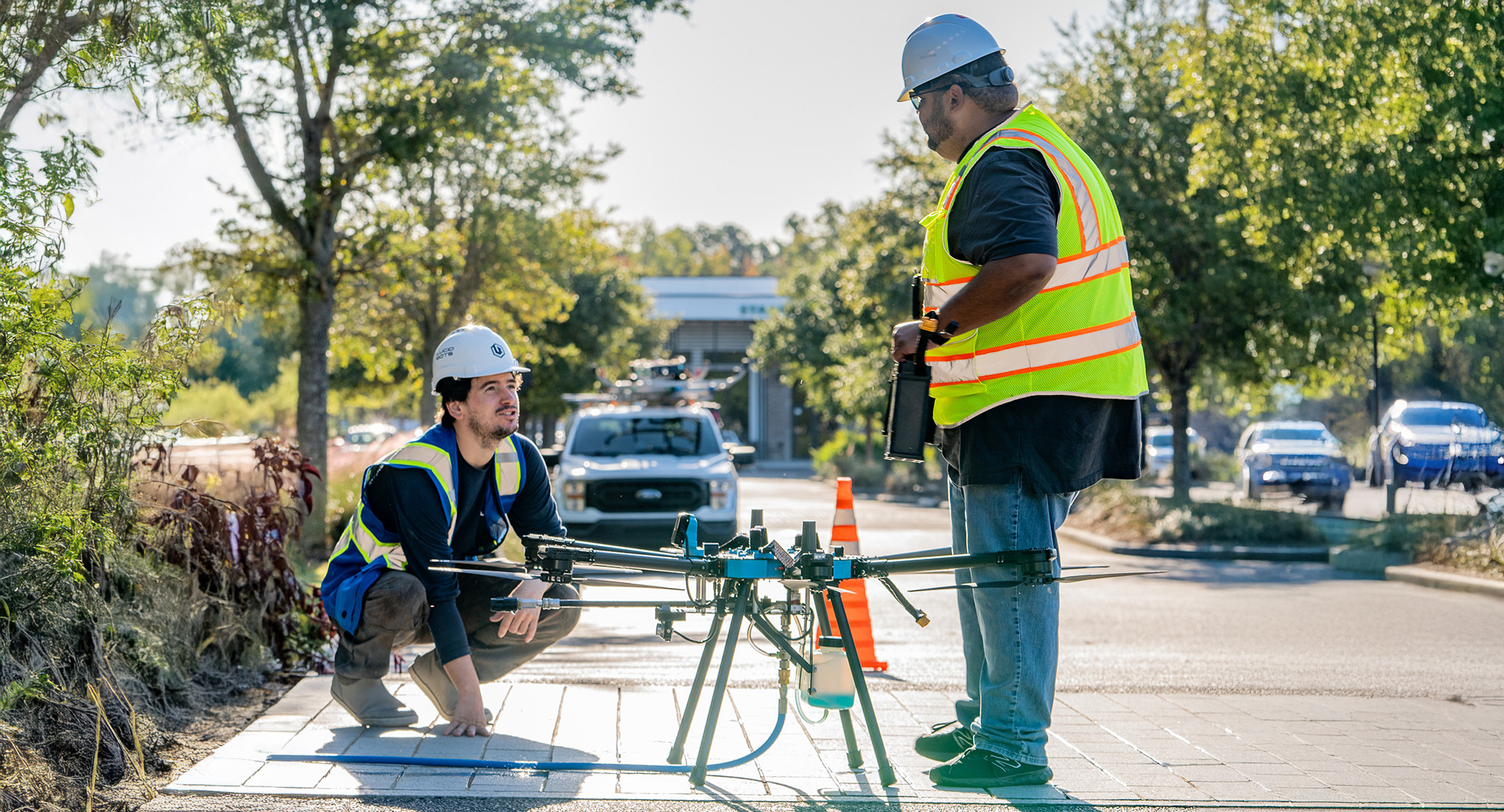Securing the Sky: Understanding Insurance for Drones in Facility Management
As technology continues to revolutionize facility management practices, the utilization of drones has emerged as a game-changer in the industry. From...
5 min read
Lucid Bots : Oct 30, 2024 10:34:05 AM

The evolution and modernization of facility management have made smart technology a pivotal element in reshaping how commercial buildings are operated and maintained. Smart technology in facility management refers to integrating Internet of Things (IoT) devices, machine learning, and data analytics to optimize building operations. The integration enhances efficiency and significantly improves energy management, predictive maintenance, and overall sustainability.
A striking example of this evolution is found in recent studies by Fortune Business Insights, where the IoT market is observed to be on an upward trajectory, with expectations to expand from a valuation of $662.21 billion in 2023 to an impressive $3,352.97 billion by 2030. This surge underscores a broader trend toward digital transformation in the industry.

Source: Fortune Business Insights
In this article, we’ll delve into the current trends in facility management, emphasizing the emerging roles of drones, like the Sherpa Drone, and robotics, such as the Lavo Bot, in this sector.
Join us as we navigate through the intricacies of smart facility management, uncovering how connectivity, automation, and data-driven decision-making are enhancing building management systems and revolutionizing the entire ecosystem of facility management.
The landscape of facility management is undergoing a seismic shift driven by a suite of smart technologies. At the core of this transformation is integrating IoT devices, which have become instrumental in elevating building operations to new heights of efficiency and effectiveness.
IoT-enabled systems in facilities management encompass a wide array of functionalities. It includes HVAC (Heating, Ventilation, and air conditioning) control systems that adapt to occupancy patterns and lighting systems that respond to the availability of natural light. Adopting such tech boosts operational efficiency and also contributes to sustainability efforts.
Another cornerstone of modern facility management is automation. Through the use of advanced sensors and machine learning algorithms, facilities are becoming more responsive and adaptive to the needs of the managers. For instance, predictive maintenance, enabled by IoT sensors, allows for the timely identification of potential equipment failures before they occur, reducing downtime and maintenance costs.
Real-time data collection and analytics are also playing an important role. By harnessing big data, facility managers can now make more informed, data-driven decisions that lead to improved energy efficiency and cost savings. This approach to building management is no longer a luxury but a necessity for staying competitive in the rapidly evolving real estate market.

Source: Fortune Business Insights
In 2022, the smart building market in North America was valued at approximately $32.18 billion. This market is projected to experience a growth rate of 23.2% annually from 2023 to 2030. This growth is attributed to increasing investments in green building technologies and adopting intelligent building solutions to enhance workplace operations.
Introducing robotic solutions, specifically drone technology, in facility management has opened a new horizon for innovation and efficiency. Once primarily associated with photography, drones are now revolutionizing facility management practices.
In the realm of facility management, drones are increasingly being used for a variety of tasks, such as cleaning and window-washing. Their ability to reach hard-to-reach areas on building exteriors and expansive rooftops, has made them invaluable tools. For instance, drones equipped with cleaning payloads are employed for tasks such as window washing and solar panel cleaning, otherwise risky and labor-intensive tasks.
These drones are designed for efficient cleaning tasks, enhancing the safety and efficacy of exterior building maintenance. With features like obstacle avoidance and waterproof construction, Sherpa drones redefine traditional facility management techniques.

Source: Lucid Bots
The effectiveness of drones in facility management is underscored by their growing adoption. A report by Mordor Intelligence predicts that the drone service market size is expected to reach $68.94 billion in the next 5 years, growing at a CAGR of 10.42%.

Source: Mordor Intelligence
As we delve into the practical applications of drones in facility management, it’s clear that their integration offers a multitude of benefits that are revolutionizing the industry. Let’s look at some of the benefits of drone technology in facility management.
Drones dramatically increase efficiency in tasks such as building inspections and aerial surveys. They can quickly and easily access hard-to-reach areas, reducing the time and labor typically required for such tasks. This is especially beneficial for large-scale facilities or buildings with complex architecture.
One of the most significant benefits of drones is their enhanced safety. Tasks like window washing or exterior cleaning, traditionally involving high-risk human workers, can be performed remotely using drones. This minimizes the risk of accidents and ensures a safer working environment.
Drones reduce the need for scaffolding, lifts, and other expensive equipment, not to mention decreased labor costs.
Utilizing drones for cleaning ensures consistently high-quality and long-lasting results, completed with unmatched efficiency. This technology guarantees a thorough clean every time, setting a new standard for reliability in maintenance outcomes.
The introduction of drones offers a solution to the labor shortage faced in tasks considered dull and dirty. By leveraging drone technology, large jobs can be completed more efficiently and with less physical strain on workers, making the process significantly more worker-friendly.
The introduction of the Lavo Bot marks a significant milestone in the evolution of facility management, representing a leap forward in the realism of surface cleaning technology. This innovative robot is a game-changer in approaching and executing facility management tasks.
With its cutting-edge design and functionalities, the Lavo Bot represents a revolutionary advancement in facility management. It is equipped with advanced sensors, allowing it to easily navigate almost any terrain and remove the harsh nature of the manual part of surface cleaning.

Source: Lucid Bots
Some of the challenges that the Lavo Bot resolves include:
According to a report by Grand View Research, the worldwide market for cleaning and hygiene products is expected to reach a value of around $233.43 billion, with a growth trajectory marked by a 6.5% annual increase from 2024 to 2030.
The intelligent features of these robotic tools stand out as a cornerstone of modern facility management. These innovations redefine the cleaning process and can be seamlessly introduced into broader smart facility management operations.
This integration facilitates a holistic approach to facility management where cleaning operations are synchronized with other building functions optimizing overall building operations.
By adopting these advanced robotic tools, facility managers usher a new chapter in efficient and effective building management. This innovative technology offers a suite of advantages that significantly enhance various aspects of facility operations.
The Lucid Bots Sherpa Drone and Lavo Bot stand out for their ability to clean more efficiently than traditional methods. These robotic innovations are more precise than human workers and can complete the same job in the same way every time. This remarkable efficiency is achieved through easy-to-use controls, advanced navigation systems, and moving at a consistent speed, allowing for rapid and thorough cleaning of large areas, taking the spraying jobs to new heights.
In environments such as sprawling corporate campuses or multi-story buildings, the time-saving benefits are substantial, enabling facilities to be maintained with minimal disruption and higher frequency.
One of the most significant impacts of these robotic tools is on the health and safety front. By using robots to perform traditionally hazardous tasks, such as high-rise window cleaning or chemical spraying, the Sherpa Drone and Lavo Bot can minimize the need for human involvement in potentially dangerous situations.
This shift not only enhances worker safety but also contributes to a healthier workplace environment by ensuring consistent and thorough cleaning.
These robots are cost-effective and advantageous for facility managers. It decreases reliance on manual labor and enhances cleaning efficiency, significantly reducing operational costs.
Adopting this technology can be equated to making money with a drone, as it promises a significant return on investment. The savings accrue from reduced labor costs, minimized downtime, and the prolonged durability of facilities due to consistent upkeep, thereby ensuring financial gains alongside operational efficiency.
In an era where efficiency, safety, and sustainability are more crucial than ever, Lucid Bots emerge as the future of smart facility operations. The innovative features and substantial benefits of the Sherpa drone offer a glimpse into the future of smart facility management.
The Sherpa drone has redefined external building maintenance, and the Lavo Bot has emerged as a crucial tool in exterior surface cleaning, bringing about a new era of cleanliness and efficiency.
Bring lucidity to your facility management with Lucid Bots and embrace the advanced innovations to stay ahead in the rapidly evolving world of facility management.

As technology continues to revolutionize facility management practices, the utilization of drones has emerged as a game-changer in the industry. From...

Facility management, a multifaceted discipline, requires a facility manager to oversee and ensure the functionality, comfort, safety, and efficiency...

Facility Management, often abbreviated as FM, stands as a linchpin in the intricate machinery of organizational success. It encompasses many...